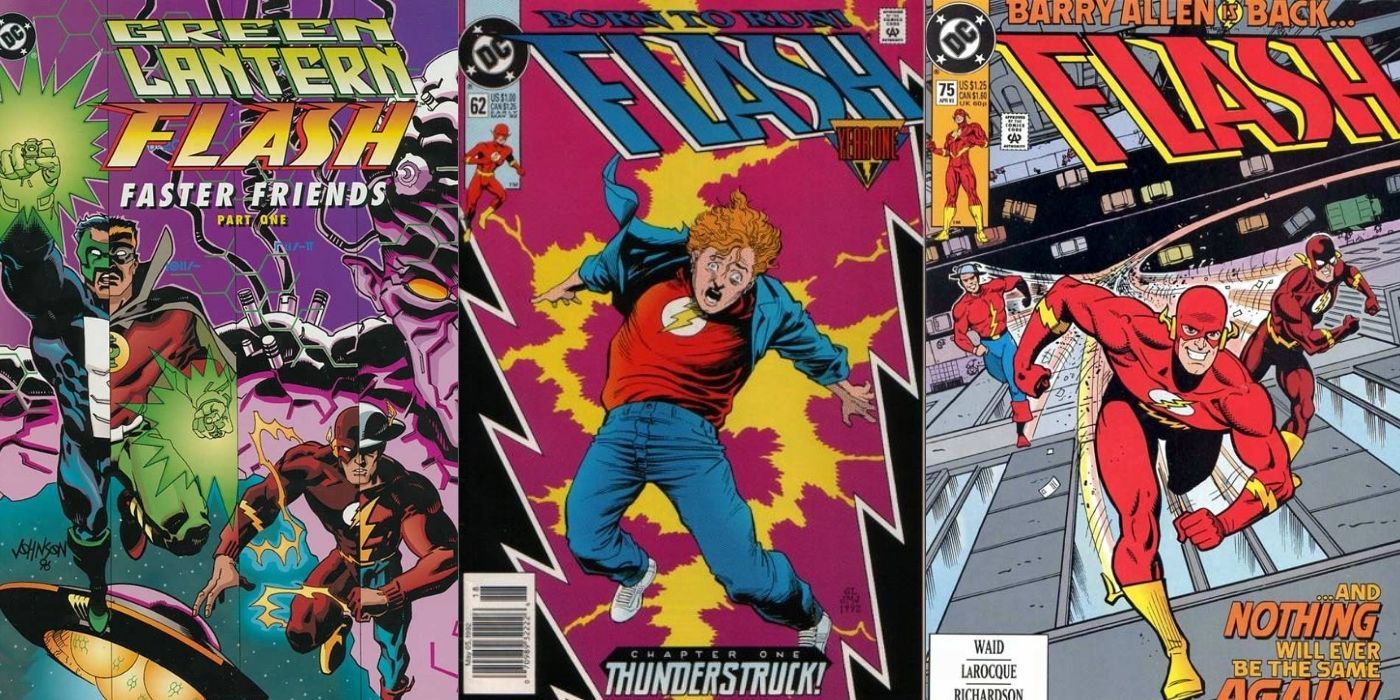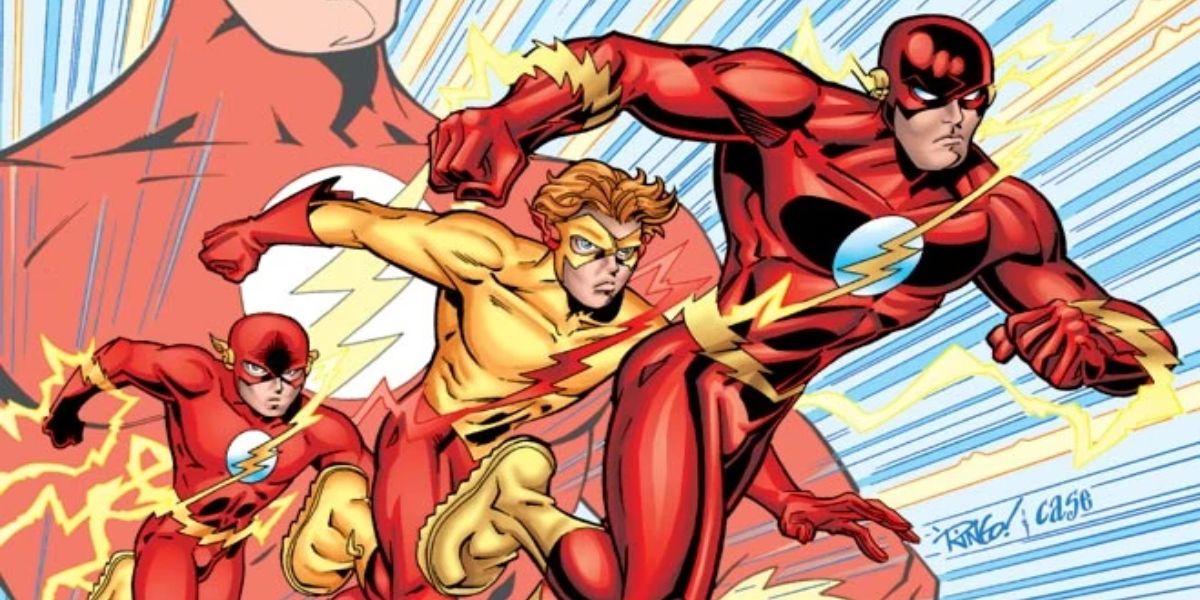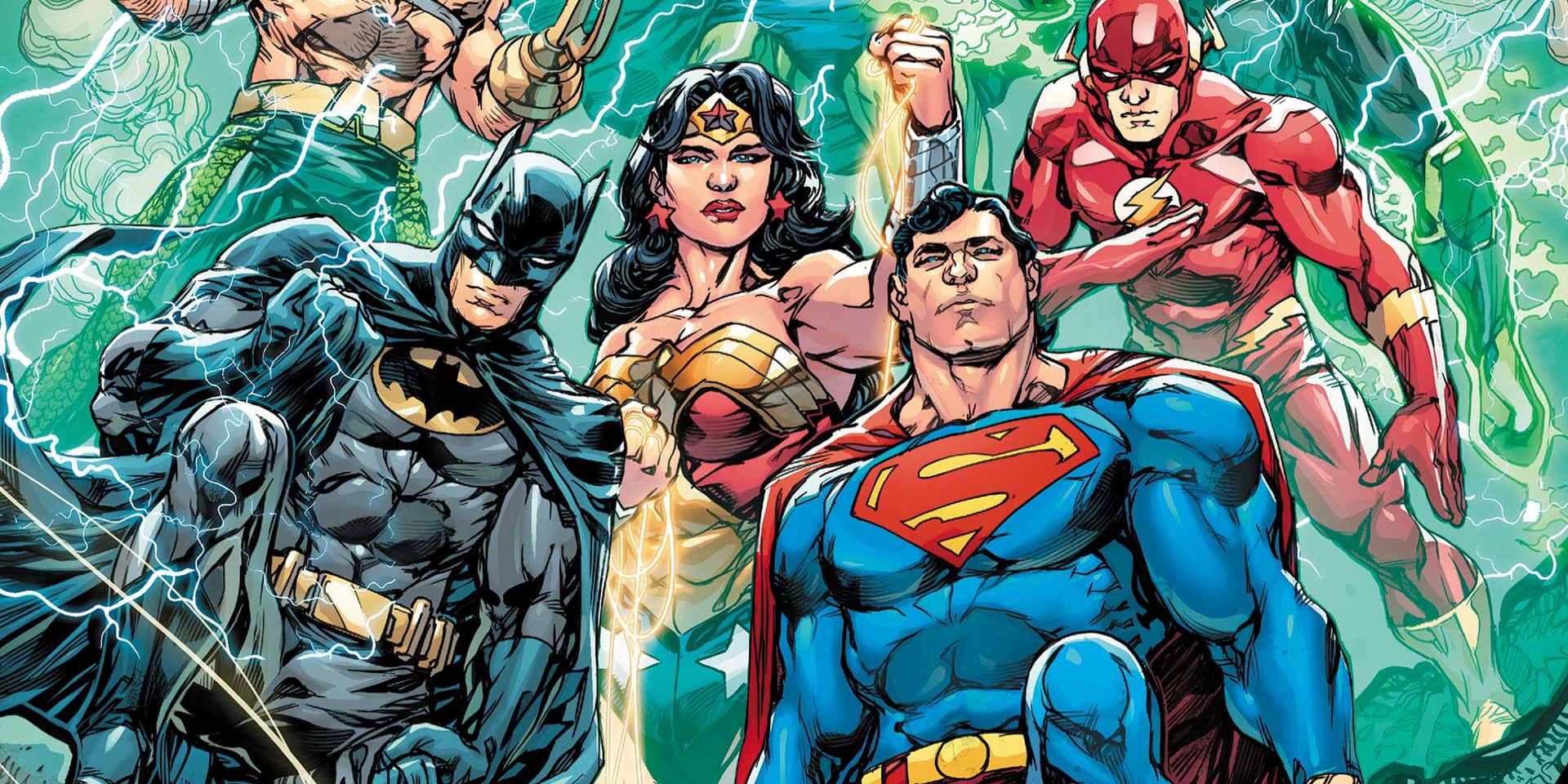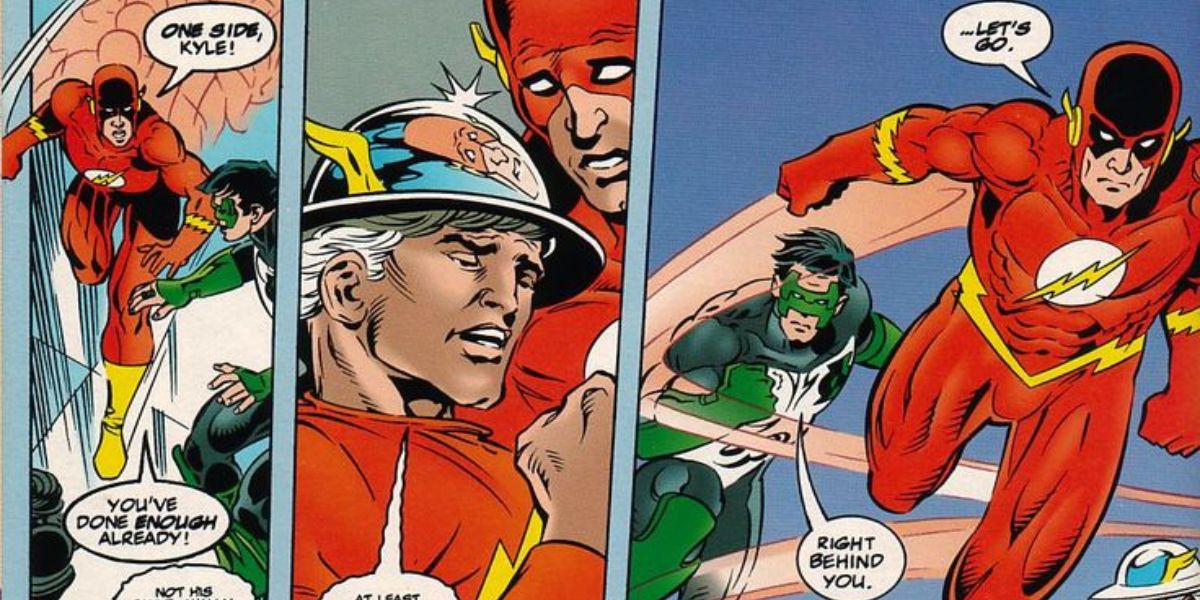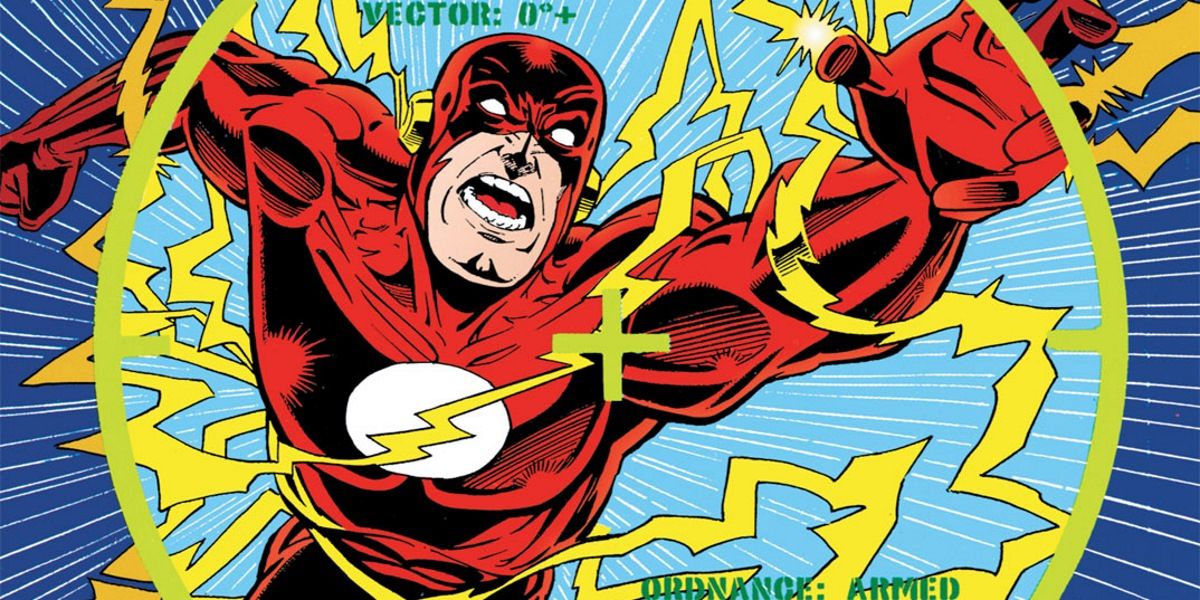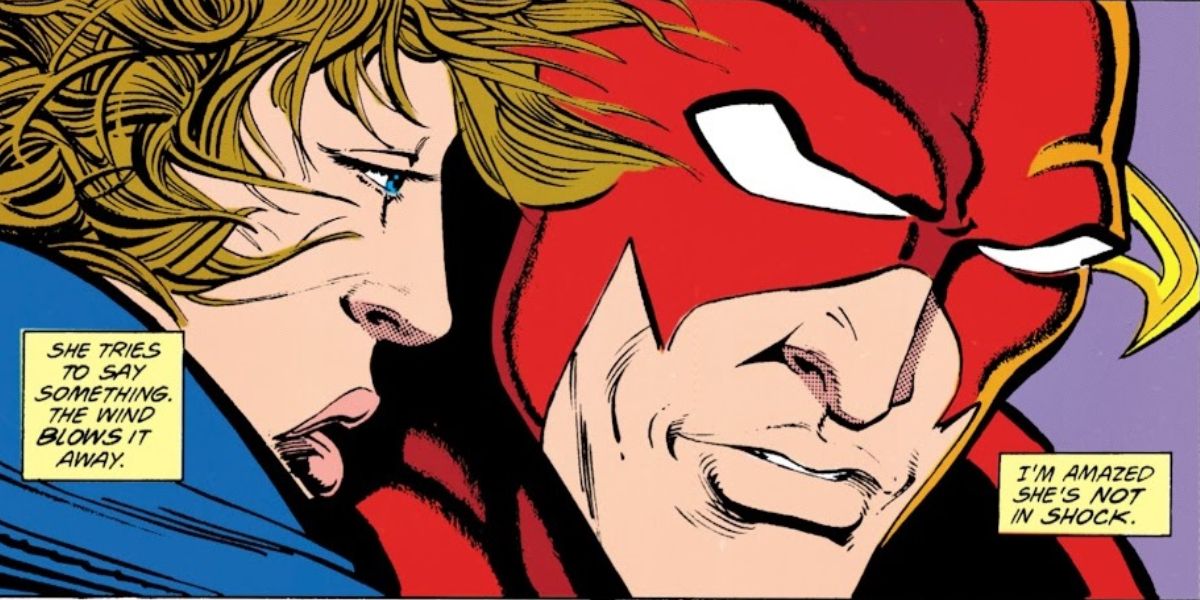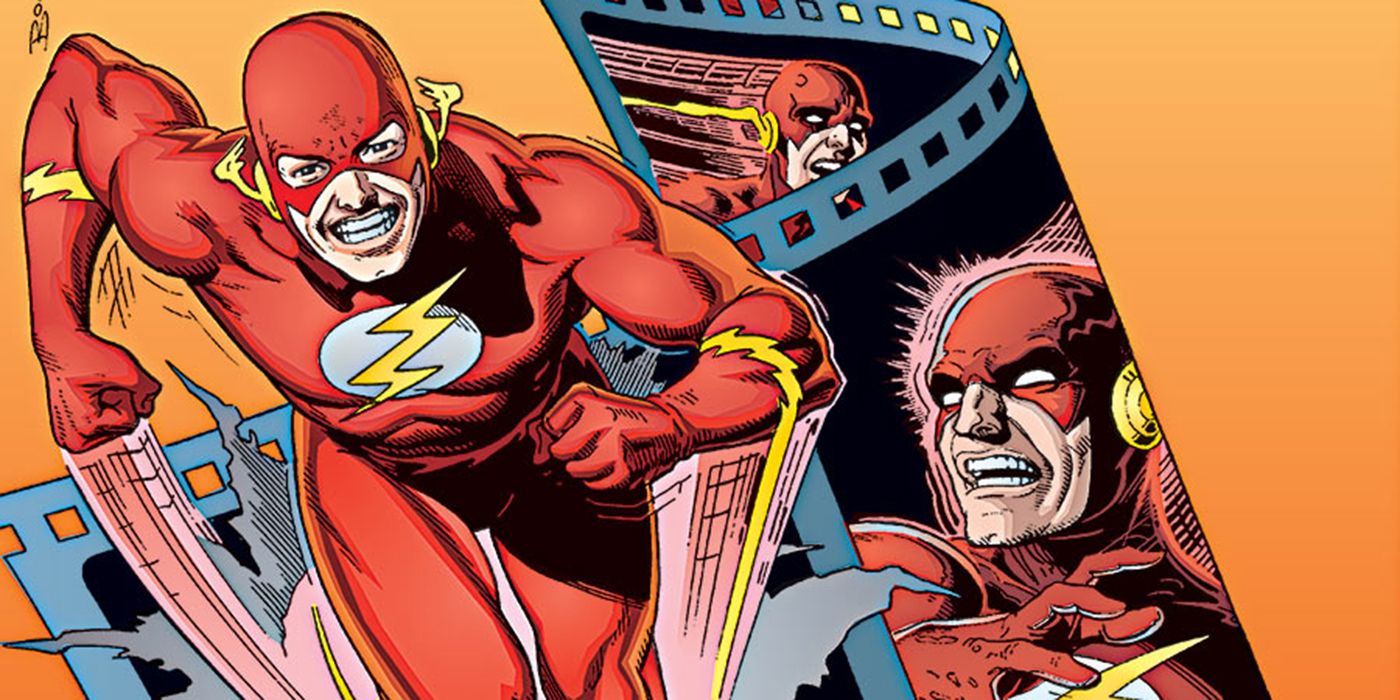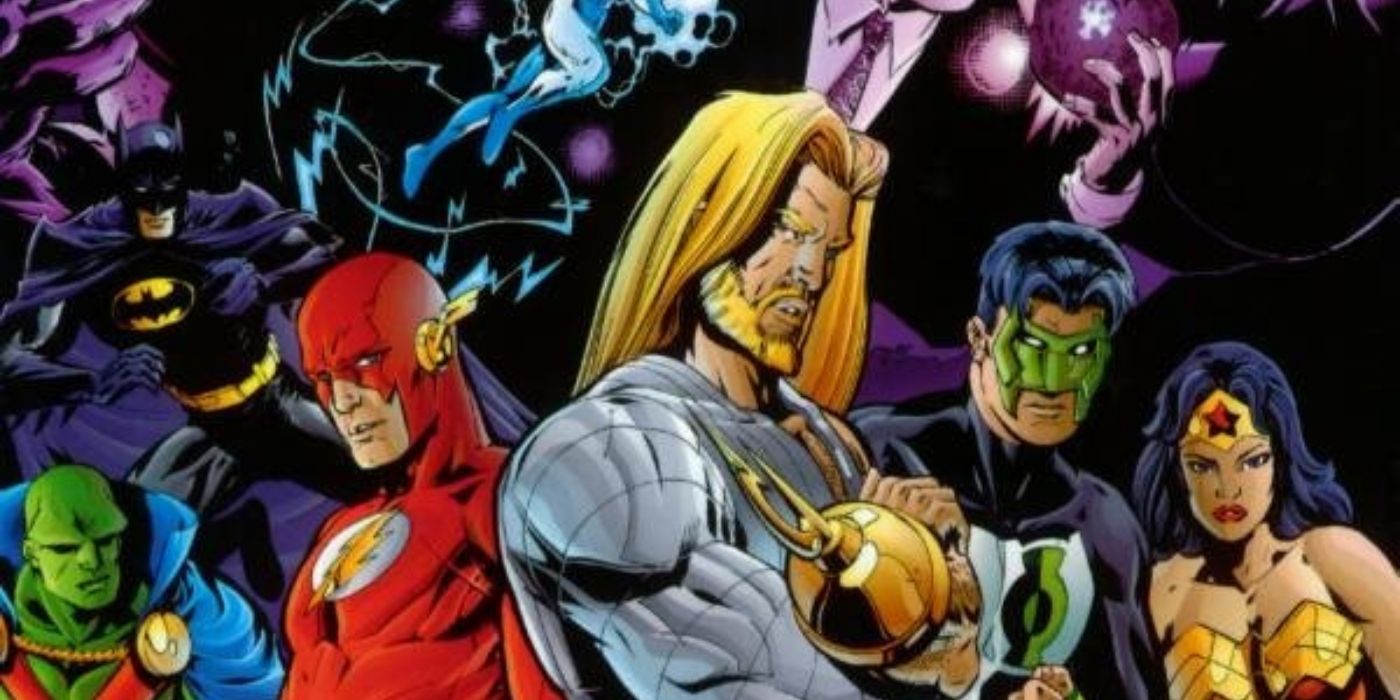The Flash has revolutionized DC Comics in the 21st-century with the Flashpoint Paradox. But even in the decade before that, the scarlet speedster has been the subject of many exciting comics. While Barry Allen is the most popular version of the Flash, the '90s were dominated by Wally West along with supporting appearances from other versions of the superhero like Jay Garrick and Impulse.
The Scarlet Speedster also appeared in popular crossover events of the era in which he joined forces with teams like Justice League of America. Some of the storylines from the 1990s have also gone on to inspire episodes of the ongoing CW series The Flash and various DC animated works like Justice League Unlimited.
Born To Run (The Flash Vol. 2 #62-65)
Born To Run marked Mark Waid's debut on The Flash by giving Wally West a rebooted origin story. Rechristened as "Year One," this storyline's continuity is set in a post-Crisis world and focuses on West's early years as Kid Flash and the maturity he goes through as experiences triumph and tragedy as a neophyte hero.
After taking over writing duties from William Messner-Loebs, Waid added a mix of everyday humor and family drama for a memorable coming-of-age story. West is eager to prove himself as a hero but his sense of responsibility comes with time in future storylines like Terminal Velocity. As a starting chapter, Born To Run is the definitive Wally West origin story, subverting the character's Silver Age roots and making him one of the most powerful versions of the Flash.
New World Order (JLA #1-4)
New World Order marked a new era for the Justice League as Grant Morrison's four-issue storyline kicked off the JLA series. The comic also marked the debut of the White Martians, an aggressive clan of Martians unlike their peaceful Green counterparts. Arriving on Earth as a group called Hyperclan, they enhance and improve the planet's environment immediately winning over public support. However, when they decide to rule Earth in order to save it, they come into conflict with the Justice League.
The Flash plays a supporting role but he gets a moment to shine as he fights a Hyperclan foe who is also a speedster. Interestingly, this Martian speedster called ZüM bears a similar physical appearance to Marvel's Quicksilver, an antihero whom the Flash would combat in the 2003-2004 miniseries JLA/Avengers. What's notable about Flash's role in this story is his interactions with the other Justice League members. Cast as the comic relief, Wally shows a breezy charm that was largely played down in his own solo series at the time.
Green Lantern/Flash: Faster Friends (Limited Series)
The Green Lanterns Kyle Rayner and Alan Scott and the scarlet speedsters Jay Garrick and Wally West appear in this crossover limited series. All four heroes go through their own internal dilemmas in an inter-dimensional conspiracy. As the Golden Age iterations of Green Lantern (Scott) and the Flash (Garrick) are captured by an alien adversary, Rayner and West come to the rescue.
In this journey, West brings out the rage reminiscent of his younger days as Kid Flash. As for the aging Garrick, he must confront his present and accept the truth that he can't reclaim his past glory. Faster Friends is an interestingly profound storyline that makes readers examine and understand the personal flaws of both heroes. In addition, this series develops the ongoing relationship between the two Flashes, who both share a love and respect for their fallen comrade Barry Allen.
Terminal Velocity (The Flash Vol. 2 #95-100)
Mark Waid had an iconic run on The Flash's second volume in the 1990s with Terminal Velocity being one of his most popular storylines. In order to save the universe, Wally West runs so fast that he breaks the Speed Force barrier and gets pulled back into the energy source.
It is this exploration of the source of the Scarlet Speedster's powers that makes the story so special. Never before did a Flash storyline touch upon the concept of Speed Force, a phenomenon that has become a mainstay of the Flash mythos. Apart from West's leadership skills, Terminal Velocity also expanded greatly on the powers of Impulse, who had an unlikely friendship with the Flash because he was born in the 30th century. The young speedster was just introduced a few issues before this storyline but it is Waid's work that established his defining character traits that are still being used today in comics and TV shows like The Flash.
Nobody Dies (The Flash Vol. 2 #54)
Nobody Dies is a compelling one-shot that reveals the extent to which Wally can go to protect people. As a woman falls off a hijacked plane, the Flash dives down to the ground below hoping to grab her to safety. The Flash has never tried jumping off from such great heights so he is unsure about his own chances of survival.
Even though both survive, the adrenaline-fueled single-issue story is a brilliant testimony of the sacrifices that superheroes make in tumultuous times. Greg LaRocque's artwork brings out the intensity as several panels just feature the Flash in mid-air, stretching out his hands to get a hold of the falling passenger.
The Return Of Barry Allen (The Flash Vol. 2 #74-79)
The follow-up to Terminal Velocity, The Return of Barry Allen continued Mark Waid's tryst with Wally West. As the title suggests, his mentor Barry Allen returns from the dead giving Wally West an unexpected reality check. The latter starts undermining his role as the Flash and questions himself on whether he lived up to the legacy of the second and most popular version of the hero.
However, Allen himself pulls off a few surprises as he turns out to be more violent than before. As Barry Allen acts like a villain, West begins investigating the true nature of his resurrected predecessor. The story makes for a compelling read that bears further testimony to Wally West's heroism as the Flash. Despite his internal doubts, he lives up to the legacy of Garrick and Allen by proving he has the intelligence, skills, and maturity to bear the moniker of The Flash.
Rock Of Ages (JLA #10-15)
JLA: Rock of Ages was one of the earliest storylines to showcase the true extent of Darkseid's powers as the DC supervillain masters the Anti-Life Equation to subjugate the entirety of Earth. If that wasn't enough, Lex Luthor also enters an alliance with Darkseid and the so-called "Injustice Gang" to control evil duplicates of the Justice League.
The Flash has combated his own doppelgangers or speedsters with similar abilities on many occasions. Still, it's not just Wally who faces intense competition when it comes to outracing his evil version. His JLA peers face similar struggles while facing off their own selves. The storyline serves as an early rough draft for the Flashpoint Paradox, which involves many such alternate versions of the costumed DC heroes. In addition, Rock of Ages is a good showcase for Wally's developing character, which is more complex and nuanced in the JLA series. Morrison expertly pits Wally's cheerful facade against his darker impulses of self-doubt and envy of his other teammates.

